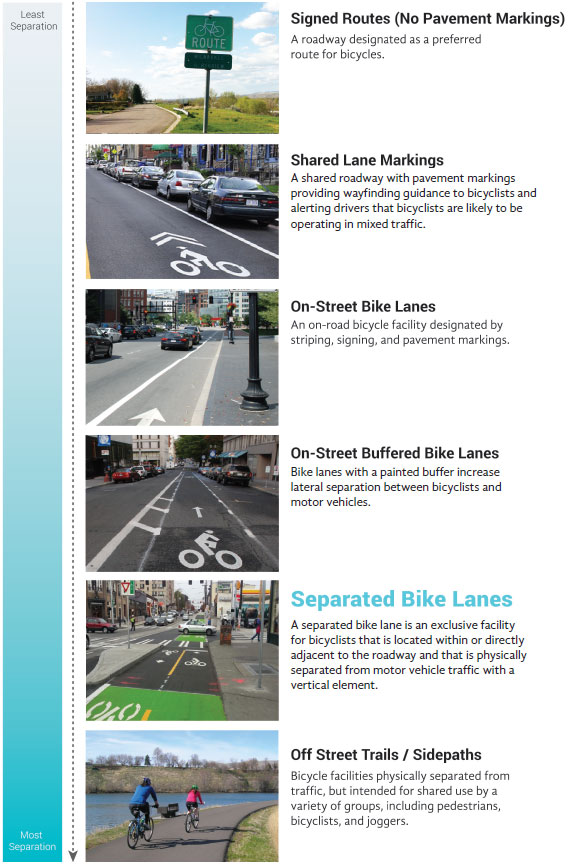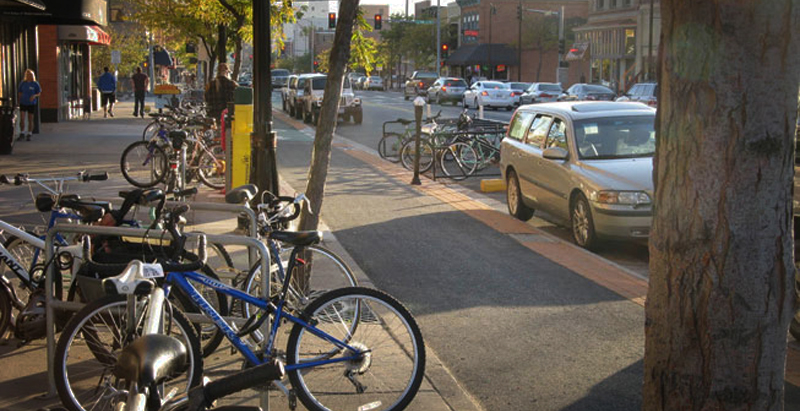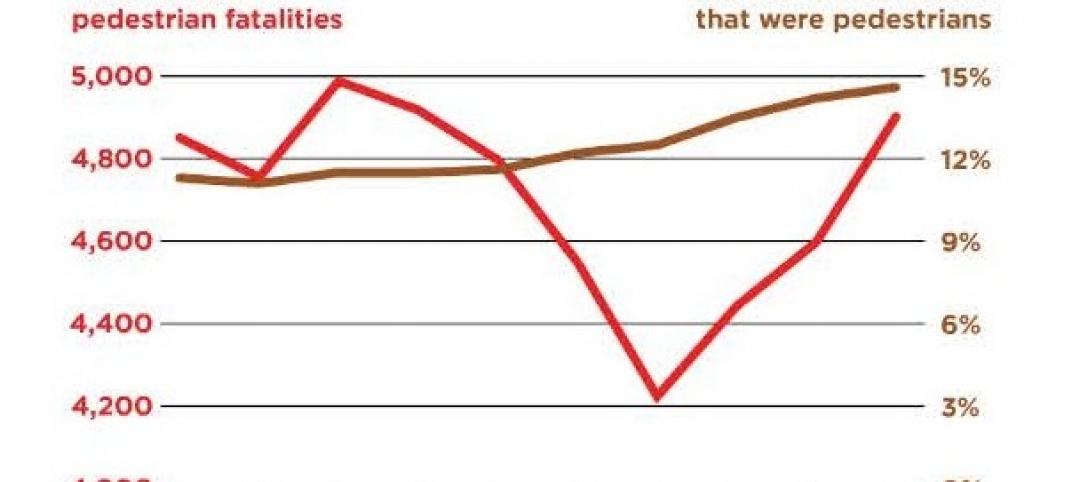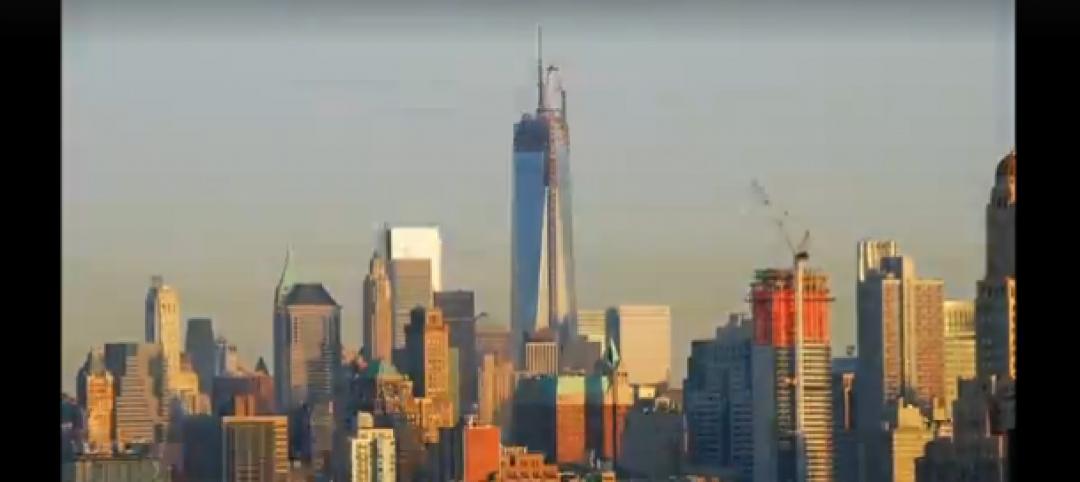The car-oriented street planning of many American cities may be a hospitable environment for bikes, but just because the streets were planned that way, it doesn’t mean they have to stay that way.
Following two years of research, the Federal Highway Administration released a new guide yesterday that will help local governments build protected bike lanes, or create them out of existing streets, Streets Blog USA reports.
“Federal legislation in Title 23 of the United States Code Section 217 provides the funding mechanisms, planning requirements, and policy tools necessary to create more walkable and bicycle-friendly communities,” the legislation’s overview states. “More importantly, it enhances the ability of communities to invest in projects that can improve the safety and practicality of bicycling and walking for everyday travel.”
The 148-page guide includes many renderings and images, such as this spectrum of bike lanes, starting from the least separated to the most separated bike lanes:

Read more on Streets Blog USA.
Related Stories
| Sep 22, 2014
4 keys to effective post-occupancy evaluations
Perkins+Will's Janice Barnes covers the four steps that designers should take to create POEs that provide design direction and measure design effectiveness.
| Sep 10, 2014
Ranked: Top transit facility sector AEC firms [2014 Giants 300 Report]
Leo A Daly, URS, and Skanska head BD+C's rankings of the largest transit facility sector design and construction firms, based on the 2014 Giants 300 Report.
| Sep 9, 2014
Using Facebook to transform workplace design
As part of our ongoing studies of how building design influences human behavior in today’s social media-driven world, HOK’s workplace strategists had an idea: Leverage the power of social media to collect data about how people feel about their workplaces and the type of spaces they need to succeed.
| Sep 3, 2014
New designation launched to streamline LEED review process
The LEED Proven Provider designation is designed to minimize the need for additional work during the project review process.
| Sep 2, 2014
Ranked: Top green building sector AEC firms [2014 Giants 300 Report]
AECOM, Gensler, and Turner top BD+C's rankings of the nation's largest green design and construction firms.
| Sep 1, 2014
Ranked: Top federal government sector AEC firms [2014 Giants 300 Report]
Clark Group, Fluor, and HOK top BD+C's rankings of the nation's largest federal government design and construction firms, as reported in the 2014 Giants 300 Report.
| Aug 27, 2014
If you value your life, don't walk in Florida
A report from Smart Growth America on pedestrian fatalities shows that cities in Florida and other parts of the Sunbelt are more deadly than others.
| Aug 26, 2014
Ranked: Top industrial sector AEC firms [2014 Giants 300 Report]
Stantec, Jacobs, and Turner top BD+C's rankings of the nation's largest industrial sector design and construction firms, as reported in the 2014 Giants 300 Report.
| Aug 25, 2014
Photographer creates time-lapse video of 1 WTC using 30,000 photos
Choosing from 30,000 photos he took from the day construction began in 2006 to the day when construction was finished in 2012, Brooklyn-based photographer Benjamin Rosamund compressed 1,100 photos to create the two-minute video.
| Aug 20, 2014
Seattle's King Street Station thoughtfully restored [2014 Reconstruction Awards]
After years of neglect and botched renovations, King Street Station sparkles once again.
















